MBDA has announced that it has secured additional funding from the Ministry of Defence (MOD) to expedite the development of the SPEAR-EW missile.
SPEAR-EW is crafted to confound and neutralise enemy air defence. Its role is not only protective – safeguarding allied forces – but also serves as a substantial force enhancer.
This Rapid Design Phase funding will hasten SPEAR-EW’s developmental phase, refining its primary sub-systems and enabling a comprehensive mission and planning assessment.
Chris Allam, the Managing Director of MBDA UK, shared his views: “SPEAR-EW will be a true game-changer for the suppression and defeat of enemy air defences. As we have seen lately, air defence networks are exceptionally hard to operate against with today’s toolkit: SPEAR-EW is the key that will enable allied air forces to unlock this challenge and gain air superiority.”
Dean Pask, Spear Senior Responsible Owner at the MOD, affirmed the institution’s dedication: “By embracing collaborative partnering, agile methods, and strategic technology, we are steadfastly dedicated to ensuring that our front line commands receive critical capabilities in the most effective and efficient manner possible.”
Leonardo, a significant player in the project, is in charge of crafting the weapon’s electronic warfare payload, capitalising on the company’s Digital Radio Frequency Memory (DRFM) technology. This technology has been trialled and demonstrated its efficiency and will power SPEAR-EW’s advanced sensing and electronic assault features. With SPEAR-EW, operators can jam enemy radar systems and employ subtler electronic warfare tactics, such as crafting decoy targets to divert threat systems away from crewed aircraft or effectors.
Highlighting the contribution of Leonardo UK, Iain Bancroft, SVP Electronic Warfare, remarked: “SPEAR-EW will incorporate a world-class electronic warfare payload, designed and manufactured here in Luton, UK. Based on our experience providing on-board jamming capabilities for the Eurofighter Typhoon and, more recently, off-board jamming in the form of our BriteCloud expendable active decoy, our technology can reliably beat current threats while remaining adaptable for the threats of the future.”


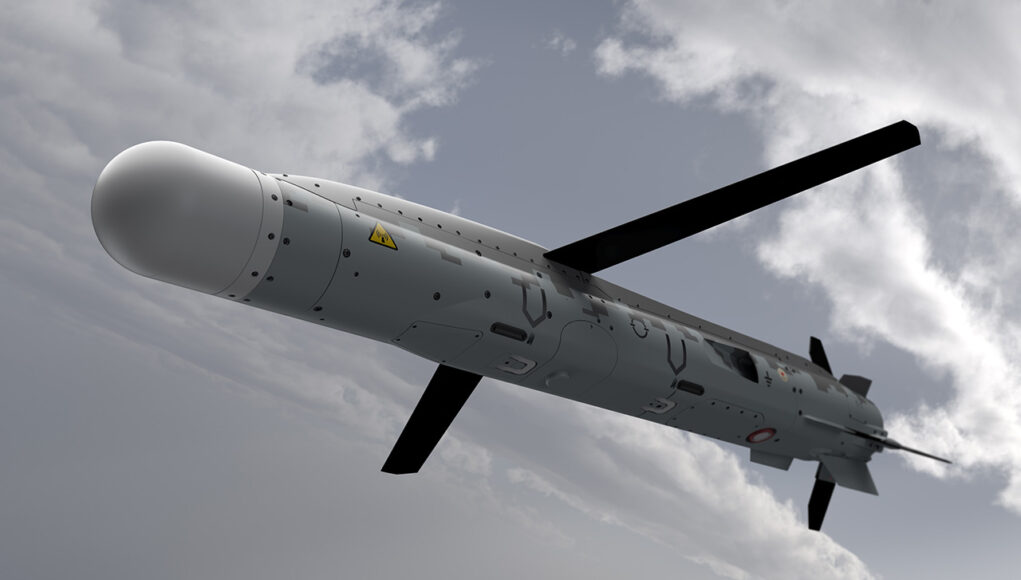
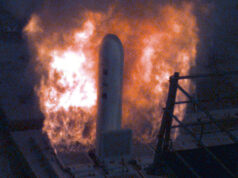




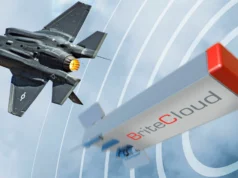
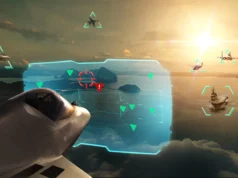
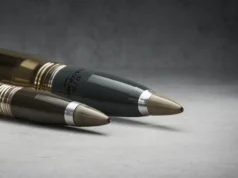



Does this self destruct to stop getting into enemy hands? Lovely bit of kit
If we ever need to use this, the objective will be to sever all the enemy’s limbs, including the hands.
This was the first thought that popped into my head as well.
No, that would introduce complications in handling and storage. Plus EM…
All that can be behind this acceleration of this EW Spear development is lessons being learned from the Ukraine war. Clearly another gap in our capabilities.
It’s not a gap, we never had such a capability before, no one has. It’s designed to defeat S400, which has shown its ineffectiveness in Ukraine.
US has the AGM88G AARGM-ER. Its successor SiAW is under development and under contract.
SPEAR-EW is not an anti-radiation strike missile like HARM though, it’s much more similar to MALD (with enhanced EW capability). It’s likely broadly comparable to the updated MALD-X the Americans are developing.
Completely different weapon, AGM88 is an anti radiation missile, SPEAR 3 is a stand in jammer, it’s US equivalent is MALD J or MALD (N)
S400 is a over priced useless piece of kit. The Israelis have been running rings around it in Syria for years.
It’s only effective against distinctly 3rd-4th gen aircraft. Not able to target a stealth aircraft like F22 or F35s until they’ve already shot off SEAD or got munitions on their way to blow it to kingdom come.
The weapons in this article should ensure RAFs ability to suppress air defences for years to come. It’s a cheap man’s electronic warfare Eurofighter in essence.
Didn’t we have similar capability with ALARM missile until 2013?
Not specifically for S400s, but for SEAD/DEAD?
We did but it needed a very expensive MLU so the MoD ditched it. It would have also required a very expensive integration effort to add it to Typhoon.
Truth is if we receive Spear and Spear-EW in the next few years the MoD will have done the right thing to ditch it….
In reading this article, I’m curious how effective the DASS on our Typhoons is against the S300/400 family of SAMs. By all accounts, the DASS on the RAF Typhoon is the best of any Typhoon operating nation out there.
Even with DASS, there always seemed to be an air of invincibility about the S300 and especially the S400 and they were to be avoided at all costs.
Understanding operational security, I am just trying to ascertain what the truth really is and how confident a Typhoon pilot could expect to be tasked with flying through heavily contested airspace.
Certainly Ukrainian Storm Shadow strikes on Crimea must have brought their Su-24s within range of the S400 systems on the peninsula and yet they have been able to penetrate it repeatedly and to great effect with low observable cruise missiles. Whether they could get away with flying ‘through’ such an area is another matter – I suspect without a preceding SEAD mission it would be near suicidal, hence the F35.
Would not want to try it in a typhoon but then that’s why we have storm shadow, so you don’t need to. F35 with SPEAR should mop up most GBAD in first few days while typhoon strikes deep strategic targets with SS.
Experience from Ukraine suggests S400 not all that, praetorian DASS is an amazing system as it can actively jam a missile and deploy a radar decoy simultaneously. Anyones guess how well it would do against S400 in actual combat but I would not he surprised if a typhoon could survive an engagement with an s400. Typhoon can launch two storm shadows outside s400 engagement range as well which can easily take out an s400 battery without troubling the DASS.
Not sure the S400 is useless or Ukraine has been very cunning in the way its attacked it. They were able to sink the Moskva using drones to distract from the Neptunes approaching as an example. There’s likely an element of Russian arrogance also, therefore not taking threats seriously.
A key weakness of S400, exposed by Turkey (who purchased S400 systems) is that it has very poor low altitude detection, such that a low altitude threat is not tracked until it’s too late to respond.
This may partly explain Ukraine’s success with Storm Shadow, where a combination of daring low flying and Storm Shadow’s LO and very low altitude flight path are unable to be effectively detected by S400.
But I’ve also seen a video of Pantsir attempting to intercept Storm Shadow, where the track goes completely haywire after lock, causing the interceptor to veer off target, so it’s likely that the missile has EW/ECM capabilities on board.
MALD has also been used, Russia has proudly showed photos and claimed to have shot them down, seemingly oblivious that it’s a decoy. So it look like it’s a combination of tactics, NATO tech and weakness of Russian AD that have facilitated these attacks.
Excellent, but SPEAR 3 isn’t expected to enter service for five years, are we likely to see this any sooner?
I would imagine that it will be dependent on S3-EW being fitted to Typhoons wouldn’t it?
Currently S3 is only slated for use on our F35’s and not Typhoons. Of course, things might well change further down the line.
MoD have told the Defence Committee that Spear will be on Typhoon….as it leans heavily on Brimstone tech it shouldn’t be as hard as you’d expect.
There are few comments below that have a few misconception over what SPEAR-EW is or does. So to clarify:
The RAF at one point operated the ALARM (air launched anti-radiation missile). This like the US made HARM (high speed anti-radiation missile), was used to destroy enemy air defences (DEAD). It had a pretty substantial warhead, that exploded radially, thereby damaging more supporting systems rather than just the radar.
Both the early HARM and ALARM at the time did not have access to GPS or miniature inertia measurement units (IMU). Which meant that if a radar detected that it was under attack, from an anti-radiation missile (ARM). It could turn off the transmitter, which would make the ARM loose lock and fly ballistically in to the ground.
The ALARM did have a party trick that the HARM did not, which was the ability to loiter. Once ALARM had locked on to a radar (emitter) it would fly towards it (as per HARM) at Mach 2. However, if the emitter was turned off, the ALARM would loose lock. Where it would then ascend and deploy a parachute, when the main engine ran out of fuel (this could be over 10,000ft). The missile would then descend slowly waiting for the emitter to turn on again. When it did, it would fire a second rocket motor to attack the emitter.
So in some ways, ALARM had a significant advantage over HARM, as it had a sort of loitering capability. However, as it was only integrated with Tornado and for some reason the Yugoslav Orao aircraft. It had a poor export success. Today HARM has a combined IMU and GPS. Which means even if a radar stops transmitting, the missile will remember its location. ALARM was upgraded with an enhanced radar receiver, so it could target a broader spectrum of radars. But it never got the combined IMU+GPS, which would have kept it up to date. Surprisingly, the RSAF still have been using ALARM from their Tornados against radars of the Yemeni (Iranian supported) Houthi rebels, with a lot of success.
SPEAR-3/EW also has a loitering capability, as it can throttle back its micro-turbojet engine, once it has reached a certain waypoint. The loitering time however, is determined by its reserves of fuel, which is governed by how far the target is from the launch point.
SPEAR-EW is a different beast to ALARM/HARM. It does not contain an explosive warhead. The warhead has been replaced by what is in essence the guts of Leonardo’s Britecloud expendable active RF decoy/jammer. It has a singular purpose, which is the suppression of enemy air defences (SEAD).
It does this by the use of its combined digital radio frequency memory (DRFM) receiver and spectrum analyser. To determine an enemy transmitting radar’s characteristics. It will record the waveform, manipulate it and re-transmit it. This can cause ghosting, false target echoes, white noise spikes etc. All done to deceive what the radar sees and what is fed to the operator. Which can be a ground, ship or air 3D surveillance radar or a missile tracking radar.
The US have a similar device with the AGM-160C MALD-J (miniature air launched decoy). This is the RF jammer variant of the standard MALD, which is a miniature cruise missile decoy. It uses radar amplifiers to increase its radar cross section. To either mimic larger cruise missiles or aircraft. Thereby spoofing the enemy into believing they are under attack from a greater numbers of missile/aircraft, whilst hiding the true number. Like SPEAR-EW, MALD does not carry a warhead. It does not have the same broad spectrum jamming capabilities of SPEAR-EW.
The other point to bear in mind is the range of the jammer. Due to its size, the jamming bubble will be relatively small. Certainly not in the same league as what the EA-18G Growler can generate. But sufficient enough to cover a missile strike package and maybe one or two 4.5th Gen (Typhoon) aircraft. SPEAR-EW also has a termination mode, where it will fly into the transmitting radar. With the aim of using the missile’s mass, velocity and unburnt fuel to cause significant damage to the transmitter.
Due to the DRFM and advanced signal processing, SPEAR-EW will be an absolute nightmare for defending radar systems. Especially those that are the older era mechanically scanned pulse-doppler or PESA radars. Even against more modern AESA radars, the waveform reprogramming and rebroadcasting will cause a lot of spoofing and confusion. When you combine that with standard SPEAR-3 and/or Storm Shadow, the effects will be devastating!
Thanks for that. EW is somewhat of a mysterious dark art for a lot of people.
Only snag I can see in that is the S3-EW does not have the range to accompany storm shadow. Of course I am basing that off the range figures given for S3, which may be lower.
Fascinating topic though.
Spear (NOT SPEAR 3, thats the MoD Programme name….i.e. we don’t call Storm Shadow SPEAR 4….) has a range of at least 120nm. Spear-EW will be more like 300nm as it can use the space occupied by the warhead for additional fuel.
The early models of HARM obviously didn’t have GPS. But they did have the ability to continue engaging a target that had shut down its radar. This was a specific improvement over the preceding Shrike missile which when it lost lock was useless. HARM, like the enormous, Standard ARM would continue the engagement. The issue was that its accuracy would progressively degrade the further it was from the target when it lost lock to the point where it became moot as there was no way the warhead would have an effect due to the CEP. Later versions included GPS that would enhance this, and ensure the missile would impact far closer to the enemy.
This is the reason that AARGM/AARGM-ER has an additional MMW seeker to continue the engagement alongside the GPS of later model HARM variants. Shutting off becomes moot at that point.
Spear and Spear-EW will be really useful for the RAF, particularly with the EW capabilities of Typhoon and F-35, particularly emitter location. What I’d really like to see is the addition of either a Meteor version that could engage emitters (this has been mentioned by MoD and MBDA but was potentially in reference to the JNAAM that will now not enter service) or an air launched LPS…which would be an easy integration effort as it utilises a similar shape as Asraam and the Brimstone seeker. That would prosecute targets far faster than Spear could….particularly pop-up threats.
With radar receivers. there is no direct way to determine range from the transmitter. As all the receiver can use is the received signal strength. Which depending on the type of radar and the waveform it uses can give misleading assumptions. It can work out the transmitters direction by using a pair of dipole antenna. By assessing which antenna receives the stronger signal.
ALARM could get a rough idea to the range of the target by doing a weave towards the target. Basically triangulating the distance from an extreme left or right etc. I can’t remember if HARM does something similar. With the advent of GPS and better IMUs. It is a lot easier for the missile to use a known reference point and then work out the distance from there.
I agree that the RAF/FAA require a means of taking out a transmitting radar quicker than Spear (3) can do, as its subsonic. Meteor does have a semi-active radar homing (SARH) capability. Which means it should be capable of locking on to another radar. However, the caveat is that this radar will have to operating within the receiver’s bandwidth.
Due to the diameter of Meteor, the antenna diameter will be quite small, which therefore dictates its radar’s likely operating frequency. Which is probably either upper X, Ku or Ka band. Broadening the receiver’s bandwidth is fairly easy to do. Though getting it as low as L and S bands will be fairly tricky in its current state. Therefore a new receiver would be required, so it could detect these lower frequencies. The other benefit Meteor has is that it has a two-way data-link. Which means the aircraft can update the missile if it goes off course, but also the aircraft can see what the missile sees. The missile already uses a modern IMU, adding a GPS receiver to this would not take up much additional room. Turning the Mach 4+ Meteor into an anti-radiation missile is more than doable.
ASRAAM is in whole different league, as its seeker is an imaging infrared (I2R) sensor. Therefore you would need to add a RF receiver, antenna etc. However, there is unlikely any spare room within the ASRAAM’s fuselage, that can be used to accommodate an additional system. Unless of course you change the seeker from I2R to the CAMM’s active radar one. However, the capabilities of I2R seekers are now better understood. With certain seekers being more than capable of tracking ground targets. If the pilot pinpointed an active radar being used to track them. It’s not impossible to train the seeker on the radar vehicle/ground station and to get a lock on it. Therefore, even though the missile does not have a RF receiver, it can still be used against the target. Plus ASRAAM doesn’t care if the radar is being turned on or off.
It has been mooted that future air to air missiles may uses a dual seeker, i.e. I2R and RF. But for that to happen you will need to further miniaturise the signal processing computer, but also make it capable of assessing both sensors in parallel. Which for a high definition solution is a big ask. Though I’m sure the missile manufacturers are working on.
HARM definitely had/has the ability from the earliest models of ‘memorising’ the target location to home if the emitter was shut down. Obviously it very much depends when the emitter was shut down as to how accurate it was.
I believe MoD and MBDA were talking about the AESA seeker head on JNAAM. However that will just be a test programme now rather than production.
Dual seeker’s are already out there. The Israeli Stunner uses radar and IR, some US SM-2 missile use radar and IR and the UK’s VSRAAM proposal from years ago used a dolphin nosed dual seeker arrangement. Future concepts exhibited by MBDA in relation to Tempest have also been dual seeker arrangments.
LPS uses the Asraam shape, but has a higher diameter (178mm rather and Asraam’s 166mm) this is specifically to enable the Brimstone 3 MMW/SAL seeker head to be added with no modification. There is also a dedicated EO/IR seeker head option.
Surely a more persistent craft is needed?